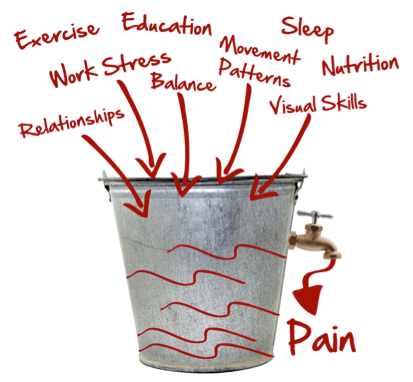I'm so unfit!
It’s bright, cool and you are in your favourite location, about to run your favourite route – absolutely perfect. You set off all bouncy and smiley, but just a few moments later your chest gets tight.
Your breathing starts to control you and you slow down. Now you feel like you’re just plodding along, heavy in your feet. Your breathing starts to recover but your chest is still uncomfortable. You start to worry there actually may be something wrong. But really this happens at the start of most of your runs. And not only at the start.
Every time you push the pace your breathing gets out of control. You start to feel uncomfortable, like your lungs are about to explode. Then the pain comes and you slow right down, sometimes even walking. “Argh” you think to yourself, “why does this always happen!?”
“I’m so unfit but I run three times a week. Why is this not improving!”
It’s no wonder you get frustrated and just settle for plodding along, pretending that doing the same routes at the same pace is as enjoyable as ever – but it isn’t, is it?
You can be in control
I know exactly how you feel because I’ve been there myself. It’s horrible and it’s demotivating. But you can get over it. You can be in control of your breathing rather than the other way round, and here’s how…
Let’s look at two common scenarios:
Scenario 1:
You are only out of breath in the first mile or so, then it settles down – even when you are pushing hard.
Scenario 2:
You get out of breath in the first mile or so and whenever you push hard.
Now, pushing hard will always challenge your breathing. But there is a difference between the feeling of working hard and that panic, fear, or oppressive feeling you get from your breathing being out of control. We’ll come back to specific solutions in a minute, but first let’s briefly look at why you end up gasping for breath.
There are a few main reasons why you lose control of your breathing:
- Lack of specific fitness
- Lack of rhythm
- Factors negatively affecting brain safety
The first two are as straightforward as they appear. Our breathing system is complex, and most of the time it’s fully automatic. We really only become aware of it when it’s irregular, or when we need it to function at a high level such as running hard.
And your breathing system needs to be trained just like any other part of your body. Indeed, your diaphragm needs to be consciously trained in exactly the same way as you would train your arms, legs and core. Your diaphragm is the large, powerful muscle that is responsible for your lungs emptying and filling.
If you are not using it correctly, or have not trained it for running, can you really expect it to perform properly? So, your diaphragm and lungs need to adapt to running just like any other body part.
Moving onto rhythm. Running is all about rhythm. The graceful, relaxed running style of the elites comes from rhythmic strides that make them look like they are gliding across the ground rather than stomping or stabbing as many of us do.
The good news is that you can easily build rhythm into your running – just start counting! Then, start matching your breathing to this and bingo!
The third reason, brain safety, is perhaps a little harder to grasp. Although if you’ve read the Run Strong Guide it should make pretty good sense. For this post I’ll keep it as simple as I can.
Your brain’s number one priority is to keep you safe. If something is off and your brain feels it isn’t safe to run, it’ll slow you down or stop you. And something being off could be almost anything:
- Poor eyesight
- Over-tired
- Not moving well
- Poor balance
This list goes on and on and is often very personal to you and your unique life. Here is a diagram that may help.
Image credit: ZHealth
Taking action
Now let’s address these areas so you can begin to take control of your breathing.
In the first scenario where you are only out of breath at the start of your run, a decent warm up can really help. It doesn’t need to be a long warm up (5 minutes will do), but difference it can make to that first mile is amazing.
Scenario two is more involved and requires some specific action to be taken on the areas mention in the scenario. I will be posting some examples and samples that you can try out over the next few weeks.




Recent Comments